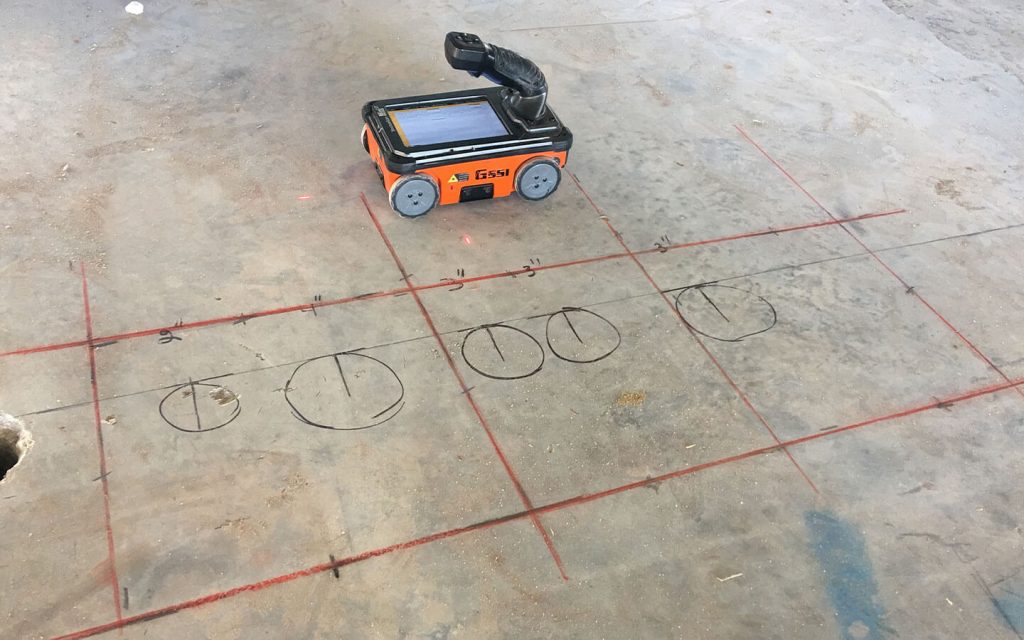Discovering the Key Advantages of Concrete Scanning in Building And Construction Projects
In the realm of modern-day building practices, the usage of concrete scanning innovation has emerged as a pivotal tool for making sure task performance and structural integrity. From enhancing safety and security actions to precisely finding utilities concealed beneath the surface, the benefits of concrete scanning are complex. RainierGPR Concrete Scanning.
Improved Safety Actions
Making use of sophisticated concrete scanning modern technology boosts safety measures on construction websites by supplying precise discovery of prospective hazards hidden below the surface. This technology enables building teams to recognize rebar, channels, post-tension cable televisions, and other blockages before excavation or boring, considerably lowering the threat of mishaps. By determining these components exactly, employees can prevent destructive crucial structural components, therefore preventing injuries, hold-ups, and pricey repairs.
In addition, concrete scanning plays a crucial function in making certain the integrity of existing structures throughout improvements or developments. By identifying weak points, spaces, or deterioration within concrete elements, engineers can resolve these issues proactively, enhancing the total safety and durability of the building. This positive strategy not only reduces the threat of structural failings however likewise lessens the capacity for mishaps caused by unforeseen architectural deficiencies.
Basically, the application of concrete scanning modern technology acts as an aggressive safety and security measure that safeguards both building and construction employees and the structural integrity of structures, inevitably adding to the overall success and performance of construction jobs. - RainierGPR Concrete Scanning
Accurate Discovery of Energies
Concrete scanning modern technology assists in specific recognition of underground energies, improving building website security and effectiveness. Accurate detection of energies is important in construction tasks to avoid pricey damages, task delays, and most notably, make certain the safety and security of employees and the public. By utilizing advanced scanning innovations such as ground-penetrating radar (GPR) and electromagnetic induction, construction teams can map out the location of buried pipelines, wires, and other energies with high levels of accuracy.

Time and Price Efficiency

Concrete scanning innovation allows construction groups to precisely locate rebar, post-tension cables, and various other embedded their website things within concrete see this website frameworks. This specific information helps in staying clear of costly blunders such as unintentional damage to important elements throughout exploration, reducing, or coring tasks. Furthermore, by recognizing potential dangers ahead of time, the need for expensive repair services or revamp due to damages can be lessened, bring about cost savings for the job.

Furthermore, the capability to promptly and properly detect utilities underneath the surface area without creating any kind of damages not only saves time but likewise stops pricey disruptions to existing facilities. Generally, the moment and price efficiency benefits of concrete scanning make it a very useful device for enhancing building task management and implementation.
Preservation of Architectural Stability
Maintaining the architectural integrity of buildings and framework is vital in making sure long-lasting security and security. Concrete scanning plays a vital function in this preservation process by allowing construction specialists to recognize prospective risks to the structural integrity of a structure or facilities before they escalate right into significant problems. Via using sophisticated scanning innovations such as ground-penetrating radar (GPR) and electromagnetic induction, construction groups can non-invasively analyze the problem of concrete structures, find rebar, post-tension wires, and other embedded elements, and determine any type of spaces, splits, or damage within the concrete.
Improved Task Planning
In order to ensure the successful implementation of building and construction navigate to this website tasks, precise focus to detail and thorough planning are important elements that stem from an extensive understanding of the structural conditions determined through concrete scanning. Boosted project preparation, helped with by concrete scanning, permits building groups to preemptively deal with possible challenges, allot resources a lot more efficiently, and establish realistic timelines. By precisely recognizing the location of rebar, post-tension wires, and other embedded things within concrete structures, task supervisors can establish more exact construction strategies that reduce the threat of expensive mistakes or delays. In addition, the data obtained from concrete scanning enables stakeholders to make enlightened choices concerning structural alterations, improvements, or growths, resulting in smoother project shifts and enhanced overall job results. Ultimately, including concrete scanning right into the task planning stage enhances coordination amongst staff member, promotes aggressive problem-solving, and adds to the effective delivery of building and construction projects within spending plan and schedule restraints.
Conclusion
Finally, concrete scanning provides various advantages in building jobs. By improving security steps, accurately finding energies, boosting time and expense effectiveness, preserving structural honesty, and assisting in project planning, concrete scanning shows to be an important device for successful job execution. Its capability to mitigate threats, raise performance, and ensure job integrity makes it an essential property for building professionals.
In the realm of modern building techniques, the usage of concrete scanning technology has actually arised as an essential device for making sure task effectiveness and architectural integrity.Concrete scanning modern technology enables building and construction teams to precisely situate rebar, post-tension cables, and various other embedded items within concrete frameworks. Through the use of innovative scanning innovations such as ground-penetrating radar (GPR) and electro-magnetic induction, construction teams can non-invasively examine the condition of concrete structures, find rebar, post-tension wires, and other embedded aspects, and recognize any spaces, splits, or wear and tear within the concrete.
In order to make certain the successful implementation of construction tasks, meticulous interest to information and extensive planning are vital components that stem from a thorough understanding of the structural problems identified via concrete scanning. Ultimately, integrating concrete scanning right into the task preparation stage improves control amongst group participants, cultivates aggressive analytic, and adds to the effective shipment of building and construction jobs within budget plan and routine restrictions.